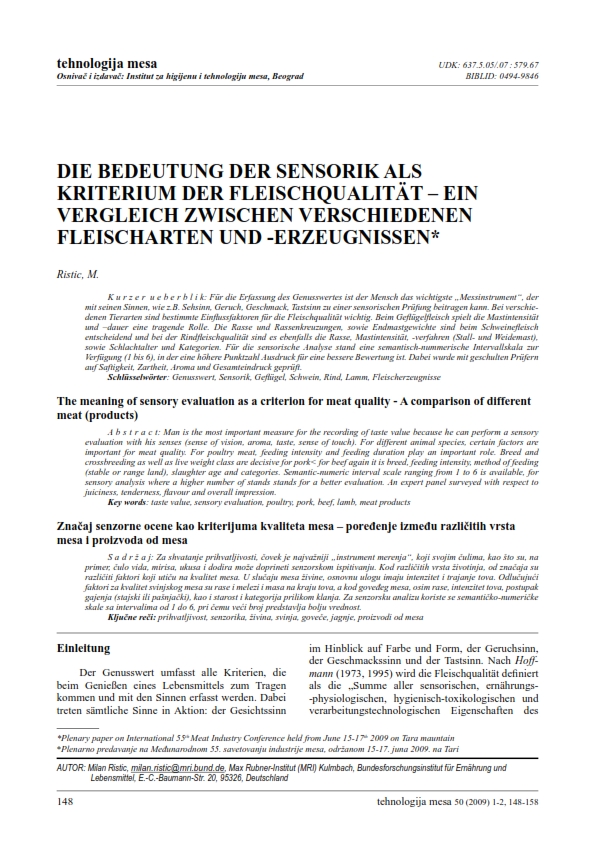THE MEANING OF SENSORY EVALUATION AS A CRITERION FOR MEAT QUALITY - A COMPARISON OF DIFFERENT MEAT (PRODUCTS)
Abstract
Man is the most important measure for the recording of taste value because he can perform a sensory evaluation with his senses (sense of vision, aroma, taste, sense of touch). For different animal species, certain factors are important for meat quality. For poultry meat, feeding intensity and feeding duration play an important role. Breed and crossbreeding as well as live weight class are decisive for pork< for beef again it is breed, feeding intensity, method of feeding (stable or range land), slaughter age and categories. Semantic-numeric interval scale ranging from 1 to 6 is available, for sensory analysis where a higher number of stands stands for a better evaluation. An expert panel surveyed with respect to juiciness, tenderness, fl avour and overall impression.





